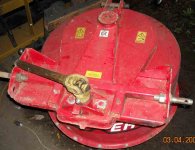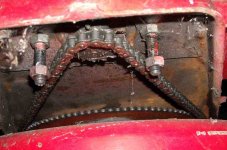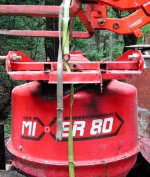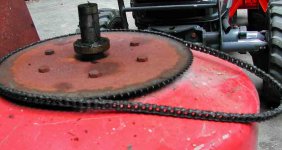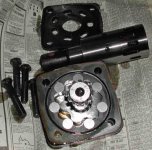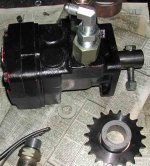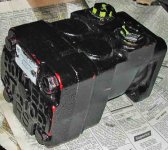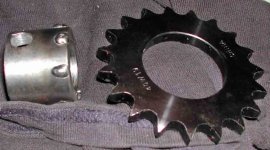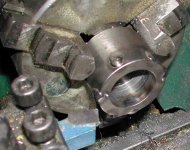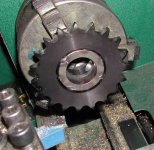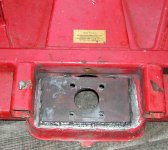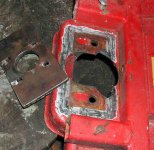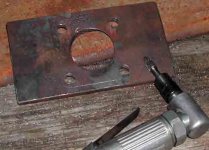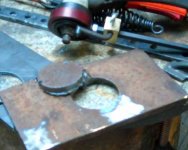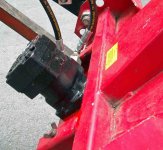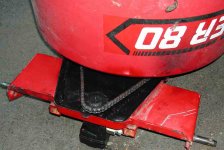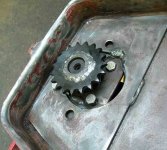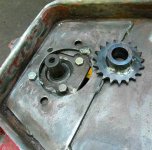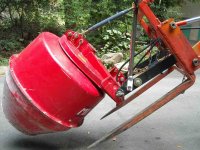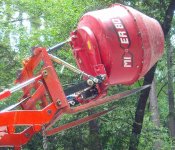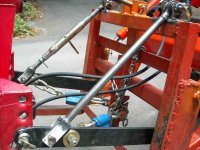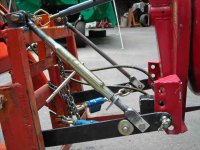dfkrug
Super Member
- Joined
- Feb 3, 2004
- Messages
- 7,174
- Location
- Santa Cruz Mtns, CA
- Tractor
- 05 Kioti CK30HST w/ Prairie Dog backhoe, XN08 mini-X
Over the next few days, I will be posting the process I went through to
convert my Mixer80 3-pt concrete mixer from PTO drive to hydraulic drive.
I am posting this in the Hydraulics forum because it illustrates what's
involved in the conversion of potentially ANY PTO-driven implement.
First question: why make this conversion? Several reasons:
> hydraulic drive is reversible. This is particularly valuable with post hole
diggers, but also gives advantages to mixers. If you can reverse the
direction of a mixer, you can use the rotation (in combo with the right kinds
of flutes) to unload the drum. This is how commercial readimix trucks work.
> hydraulic drive allows you to put implements requiring rotational power
on the front of your tractor. This is obviously better for a brush or snow
blower, but it also means you can dedicate the rear of your tractor to an
implement you do not want to remove. For me, it is my backhoe, which
is tedious to remove and provides ideal ballast.
> there are other more minor advantages like safety...no open spinning
driveshafts
***
Anyway, the first 4 photos show my mixer as it is originally configured.
There is a tiny drive sprocket (2nd photo) and 40 guage chain, which drives
a gigantic sprocket with 114 teeth (4th photo). I used my FEL to pull this
thing apart. I have mixed scores of yards of concrete and stucco over the
past 10 years, and I always lube the chain with m/c aerosol chain lube.
Despite that, the drive spocket was pretty badly worn. :-(
convert my Mixer80 3-pt concrete mixer from PTO drive to hydraulic drive.
I am posting this in the Hydraulics forum because it illustrates what's
involved in the conversion of potentially ANY PTO-driven implement.
First question: why make this conversion? Several reasons:
> hydraulic drive is reversible. This is particularly valuable with post hole
diggers, but also gives advantages to mixers. If you can reverse the
direction of a mixer, you can use the rotation (in combo with the right kinds
of flutes) to unload the drum. This is how commercial readimix trucks work.
> hydraulic drive allows you to put implements requiring rotational power
on the front of your tractor. This is obviously better for a brush or snow
blower, but it also means you can dedicate the rear of your tractor to an
implement you do not want to remove. For me, it is my backhoe, which
is tedious to remove and provides ideal ballast.
> there are other more minor advantages like safety...no open spinning
driveshafts
***
Anyway, the first 4 photos show my mixer as it is originally configured.
There is a tiny drive sprocket (2nd photo) and 40 guage chain, which drives
a gigantic sprocket with 114 teeth (4th photo). I used my FEL to pull this
thing apart. I have mixed scores of yards of concrete and stucco over the
past 10 years, and I always lube the chain with m/c aerosol chain lube.
Despite that, the drive spocket was pretty badly worn. :-(

